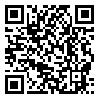Sat, Oct 18, 2025
[Archive]
Volume 9, Issue 1 And 2 (6-2017)
IJDO 2017, 9(1 And 2): 14-19 |
Back to browse issues page
Download citation:
BibTeX | RIS | EndNote | Medlars | ProCite | Reference Manager | RefWorks
Send citation to:



BibTeX | RIS | EndNote | Medlars | ProCite | Reference Manager | RefWorks
Send citation to:
Siavoshy H, Heidarianpour A. Effects of Three Type Exercise Training Programs on FBS and HbA1C of Elderly Men with Type 2 Diabetes. IJDO 2017; 9 (1 and 2) :14-19
URL: http://ijdo.ssu.ac.ir/article-1-335-en.html
URL: http://ijdo.ssu.ac.ir/article-1-335-en.html
Department of Exercise Physiology, Sport Science Faculty, Bu-Ali Sina University, Hamadan, Iran
Abstract: (4946 Views)
Objective: Type 2 diabetes(T2DM) patients can benefit from exercise training programs but there are many barriers to do exercise .The aim of this study was to investigate effects of 10 weeks aerobic, resistance and combined strength and aerobic exercise program on fasting blood sugar (FBS) and glycated hemoglobin (HbA1c) of T2DM male patients.
Materials and Methods: A quasi experimental study on 52 T2DM male patients was done. They were divided into four groups: aerobic training group (ATG; n=13), resistance training group (RTG; n=13), combined strength and aerobic training group (SAG; n=13), and control group (CG; n=10). There were three types of training program: aerobic, with intensity of 55-85% of the heart rate maximum (HRmax) 3 times /week, and resistance, with intensity of 50-75% one-repetition maximum 3 times week. Anthropometric measurements, HbA1c and FBS were measured at the beginning and after 10 weeks.
Results: The mean (± standard deviation) age of participants was 53.24 (±1.05) years old. FBS decreased significantly in all studied groups (P-value<0.05); and HbA1c decreased significantly in RTG and SAG groups (P-value<0.05), but, there were no significant differences in HbA1c between groups.
Conclusion: The result of the present study indicated that three type exercise training programs cause improving the metabolic factors related to diabetes in T2DM male patients. However, each type of training also provides unique benefits.
Materials and Methods: A quasi experimental study on 52 T2DM male patients was done. They were divided into four groups: aerobic training group (ATG; n=13), resistance training group (RTG; n=13), combined strength and aerobic training group (SAG; n=13), and control group (CG; n=10). There were three types of training program: aerobic, with intensity of 55-85% of the heart rate maximum (HRmax) 3 times /week, and resistance, with intensity of 50-75% one-repetition maximum 3 times week. Anthropometric measurements, HbA1c and FBS were measured at the beginning and after 10 weeks.
Results: The mean (± standard deviation) age of participants was 53.24 (±1.05) years old. FBS decreased significantly in all studied groups (P-value<0.05); and HbA1c decreased significantly in RTG and SAG groups (P-value<0.05), but, there were no significant differences in HbA1c between groups.
Conclusion: The result of the present study indicated that three type exercise training programs cause improving the metabolic factors related to diabetes in T2DM male patients. However, each type of training also provides unique benefits.
Keywords: Type 2 diabetes mellitus, Glycated hemoglobin, Fasting blood sugar, Resistance training, Aerobic training
Type of Study: Research |
Subject:
Special
Received: 2017/11/6 | Accepted: 2017/11/6 | Published: 2017/11/6
Received: 2017/11/6 | Accepted: 2017/11/6 | Published: 2017/11/6
| Rights and permissions | |
 |
This work is licensed under a Creative Commons Attribution-NonCommercial 4.0 International License. |





